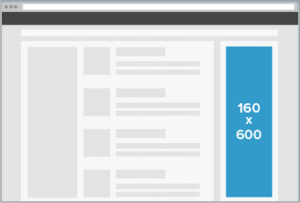After an unforgettable year filled with ups and downs, we’ve almost made it to the end of 2020. And while at times it’s felt difficult to find the silver lining, it’s certainly been a transformative year in more ways than one. For small businesses impacted by the COVID-19 pandemic, this is especially true.
We’ve heard some incredibly powerful stories from our customers this year who have been forced to reimagine their entire business to adapt to a newly distanced and digital-first world. As if that wasn’t challenging enough, they’ve also had to re-learn what their customers want as shopping behaviors have changed by the day.
Hearing how our customers pivoted inspired us to think about new ways we could help decode the changing landscape and prepare small businesses for a successful end to the year.
This 2020 Small Business Pulse Report includes insights from over 3,000 consumers in the U.S. (age 18+). It is designed to help small business leaders understand exactly how the pandemic has changed the way shoppers engage with them. The results indicate that despite a rough year, small businesses who have moved online quickly could see their efforts rewarded as 2020 comes to a close and we power on into 2021.
Constant Contact’s 2020 Holiday Small Business Pulse Report
Consumers have made it a priority to shop from small businesses
With retail locations forced to remain closed through much of the year to encourage social distancing, consumers had no choice but to start shopping online. Ecommerce growth has accelerated significantly since then – possibly advancing by as much as two years. Still, our research indicates that consumers weren’t ready to give up on buying from small businesses just because they couldn’t visit a physical store.
Many small business leaders recognized this demand early on in the pandemic and took steps to shift their offerings to an online-first model. In doing so, they helped transform the world of online shopping – which had previously been dominated by large retailers – into one where small businesses could thrive as well. All of a sudden, consumers who still wanted to support their local businesses had an immediate outlet to do so.
So, free to shop online wherever they liked, where did people go?
Our research reveals that consumers showed up for small businesses.
- About 70 percent of the shoppers we polled said they have visited a small business (either online or in-store) at least once a month since the COVID-19 pandemic hit
- One-fifth have made it a habit – choosing to shop small at least five times per month.
- Compared to 2019, 60 percent said they have made more of an effort to support local businesses in their community this year, and another 20 percent still intend to do so before the end of 2020.
As for what they are buying from small businesses, essential categories like grocery scored high as people likely chose local convenience stores over traditional grocers to limit their exposure to COVID-19. However, we also discovered that apparel and health & beauty were popular categories at small businesses, which can likely be attributed to pandemic-driven lifestyle needs (balancing comfort with an uptick in virtual meetings).
From these responses, the opportunity for small businesses is clear – shoppers are online and they’re ready to buy from you right now. An online store is no longer a nice-to-have, it’s absolutely mandatory to survive in the new normal. Small businesses who were early adopters of ecommerce, or who made the switch to online stores early in the pandemic, have seen this impact firsthand.
Shoppers care about price and fast shipping, but remain committed to purchasing from small businesses
While it’s important to know that shoppers are open to buying from small businesses, we also wanted to evaluate shopping intent to learn what makes someone choose a small business over a larger retailer. In exploring this, we discovered something interesting.
More often than not, consumers prefer to shop small.
- One in four shoppers said that when given the opportunity to purchase the same item from either a small business or a large retailer, they would always choose the small business.
- Just five percent said they would always choose the bigger retailer.
That’s great news for small businesses, who can take confidence in knowing that with the right offerings, they can demonstrate the value of shopping with them vs. their big box competitors. So, what are those factors that push consumers to purchase?
In a year when unemployment hit a record high, it comes as no surprise that price sensitivity is the top consideration when choosing to buy from a small business or another retailer.
- More than 36 percent of consumers we polled said they would choose the cheaper option, and price is an especially significant factor for those over the age of 55.
- After price, it’s all about speed. Fast shipping or fulfillment was next most important to shoppers (18 percent), with 18-24 year olds ranking this even higher than price.
This highlights a few opportunities for small businesses hoping to stand out from larger retailers and sway consumers who are shopping online. While it can be difficult to compete in both price and fulfillment speed, there are steps small business leaders can take to put themselves in a position to succeed.
First, understand your target demographic and what unique purchase factors are most important to them. The fact is, while price and speed may be the most common factors, they may not matter as much to your particular customer.
Once you understand what they’re looking for, find new and creative ways to deliver that value to them in ways larger retailers may not be able to. Small businesses can often move faster and experiment more than their larger competitors, so just like in the rest of your digital marketing, test new ideas often.
That may include new promotional schedules and coupons, better inventory management or even choosing new partners to work with who can enable you to move faster. When you find something that works, stick to it.
Small businesses who understand their customers stand the best chance of competing with the big retailers.
Small businesses who sell online are likely to capture holiday shoppers
The 2020 holiday season is going to look different than any that have come before it and many in the small business community are wondering how to prepare for the busiest time of year in the midst of a pandemic. Fortunately, we bring good tidings!
According to our research, small businesses have a massive opportunity this holiday season if they are selling online. It seems that consumers’ preference for shopping small will also extend into the holidays.
- 71 percent of those we polled said they plan on buying items on their shopping lists from small businesses.
- As further proof that ecommerce will be critical this season, only 10 percent said they needed to visit a physical store to buy.
- Shoppers also seem ready and willing to expand their horizons this year as 62 percent are planning to visit a new small business they’ve never shopped at before the year is through.
One major question heading into October was whether Amazon’s decision to hold Prime Day later in the year would eat into holiday sales from other businesses. As it turns out, small businesses who aren’t selling on Amazon needn’t fret.
- More than half of consumers said they didn’t plan to buy any holiday gifts on Prime Day.
- One in three consumers said they do their holiday shopping somewhere else entirely.
That means more opportunity for small businesses with their own online store, and those who also offer their products on other marketplaces like Etsy, eBay, and others.
Get the tools you need to put a bow on 2020
It’s been a trying year for small businesses, and while the pandemic may have altered the ways we do business, it’s also unearthed new opportunities, particularly as we enter the busy holiday season. Fortunately, it’s never been easier or more achievable to start selling online and take advantage of this opportunity than it is today.
With consumers showing a renewed appetite for buying small, and online holiday shopping predicted to exceed 2019, there’s a reason for small businesses to be optimistic as 2020 comes to a close. Those who can establish an online presence, move their products online and make the buying process as simple and convenient as possible for shoppers will certainly put themselves in a better position for a strong end of year, and for ecommerce success in 2021.
Business & Finance Articles on Business 2 Community
(15)
Report Post





